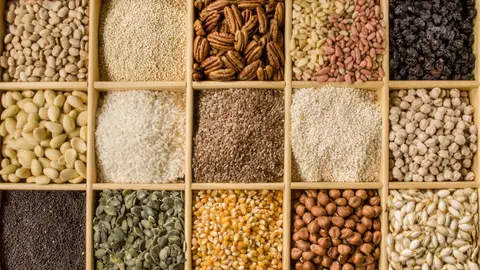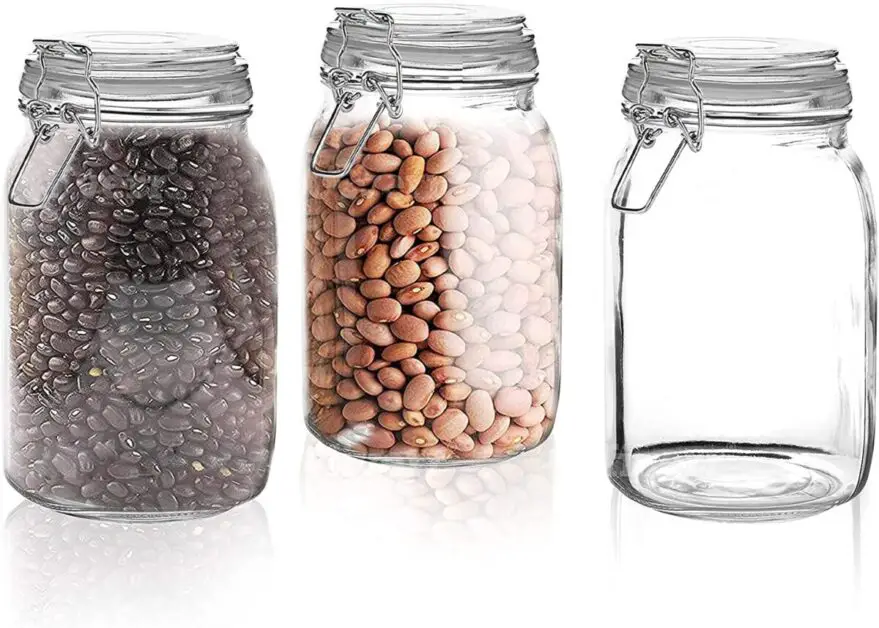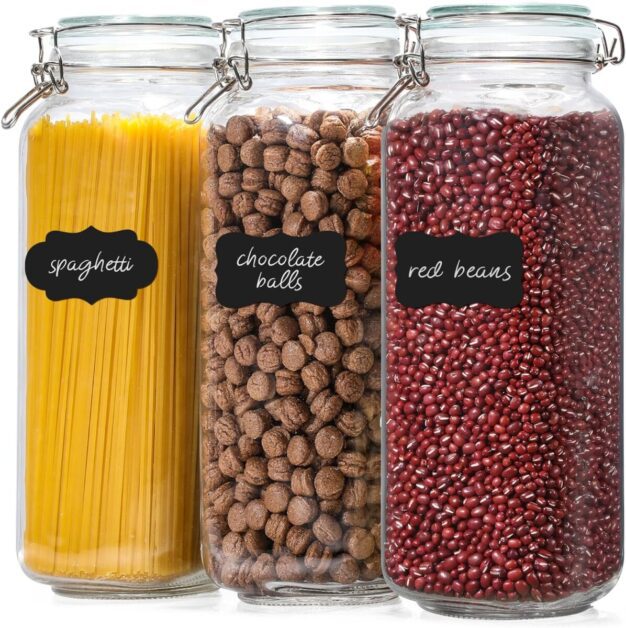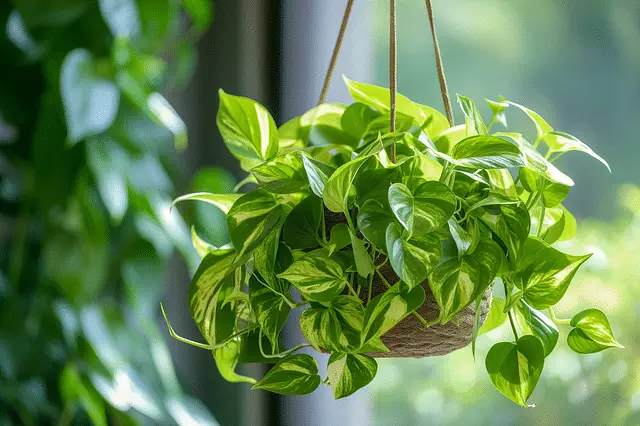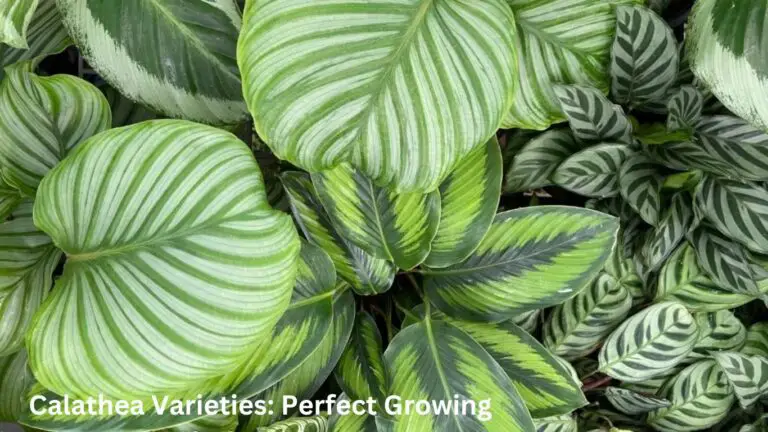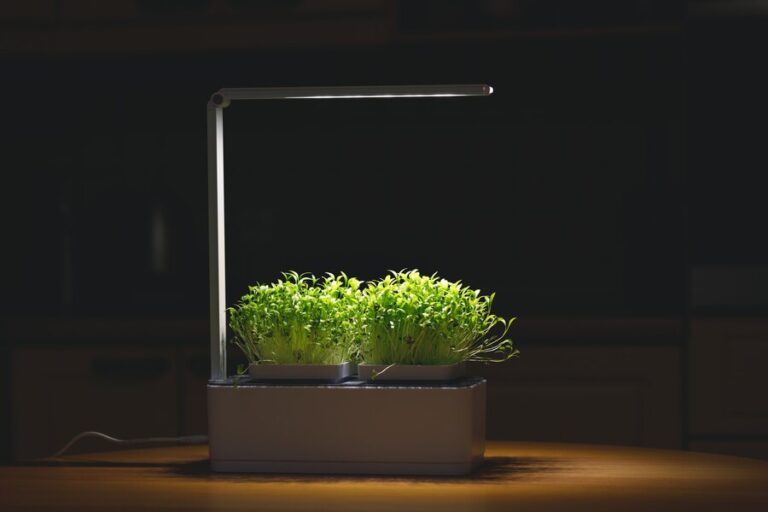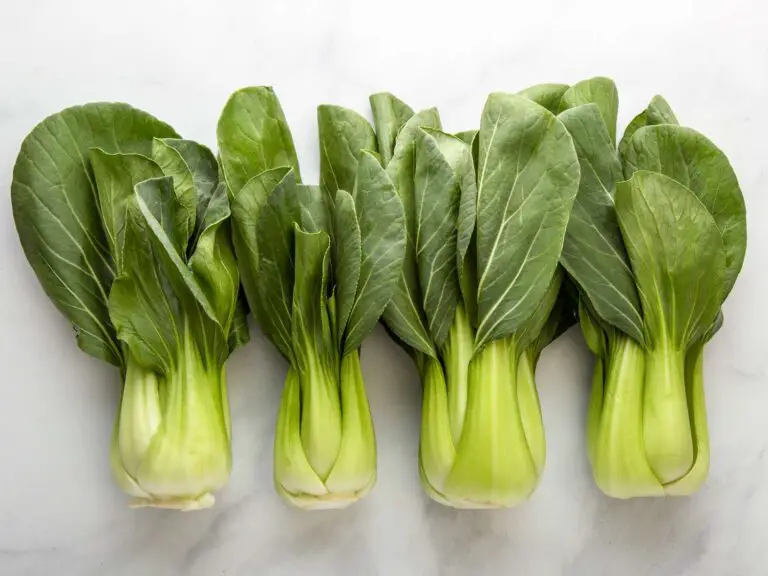Your Ultimate Source for Heirloom , Organic, and Non-GMO Seeds
Are you ready to take your gardening game to the next level with the finest selection of heirloom, organic, and non-GMO seeds? Imagine a garden blooming with vibrant colors and bursting with flavors straight from nature’s purest sources. Your search for premium quality seeds ends here! We are your ultimate source for all things heirloom, organic, and non-GMO, offering a wide variety of seeds to cater to your green thumb dreams.
With our commitment to excellence and sustainability, you can trust that your garden will flourish with the best nature has to offer. Get ready to sow the seeds of success and watch your garden thrive like never before!
Table of Contents
The Importance of Heirloom Seeds in Maintaining Genetic Diversity
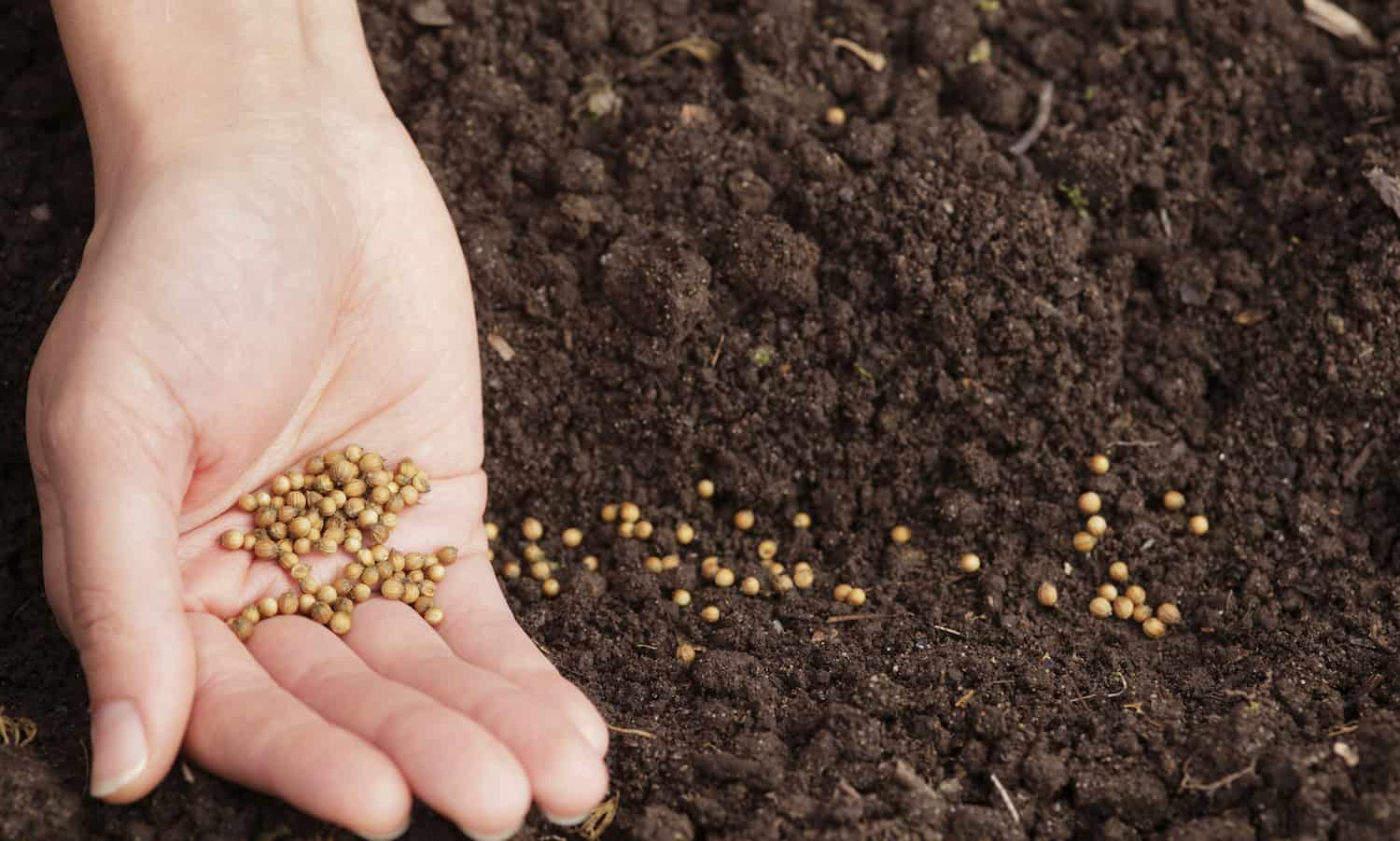
Let’s break down the importance of heirloom seeds and their contribution to ecosystem health in a concise manner:
- Genetic Diversity:
- Heirloom Seeds: These are open-pollinated seeds that stay true to their parent plants.
- Unique Traits: Heirlooms carry genetic traits cultivated over generations.
- Preservation: By growing heirlooms, we safeguard diverse plant species.
- Ecosystem Health:
- Adaptability: Heirloom seeds adapt to various conditions, enhancing resilience.
- Thriving Populations: Diverse heirloom plants contribute to overall ecosystem stability.
- Climate and Pest Resilience: Genetic diversity helps our food system withstand challenges.
Remember, heirloom seeds are not just about history; they’re vital for a sustainable and resilient future! 🌱🌿🌎
Understanding the Benefits of Organic Seeds for Health and Environmental Sustainability

Organic seeds have indeed gained recognition for their health and environmental advantages. Let’s explore their benefits:
- Health Benefits:
- Chemical-Free: Organic seeds are grown without synthetic fertilizers, pesticides, or GMOs.
- Healthier Plants: Resulting plants are free from harmful chemicals.
- Better for Consumption: Organic produce is a healthier choice.
- Environmental Sustainability:
- Biodiversity: Organic farming promotes diverse plant species and ecosystems.
- Water Protection: No chemical pesticides reduce water pollution.
- Beneficial Organisms: Bees and pollinators thrive in chemical-free environments.
- Soil Health: Organic practices prioritize soil regeneration and prevent erosion.
By choosing organic seeds, we contribute to a healthier planet and a more sustainable future! 🌱🌎
Non-GMO Seeds: What They Are and Why They Matter in Today’s Agriculture
Non-GMO seeds have become a hot topic in today’s agriculture, as more and more people are becoming concerned about the effects of genetically modified organisms on their health and the environment. But what exactly are non-GMO seeds and why do they matter?
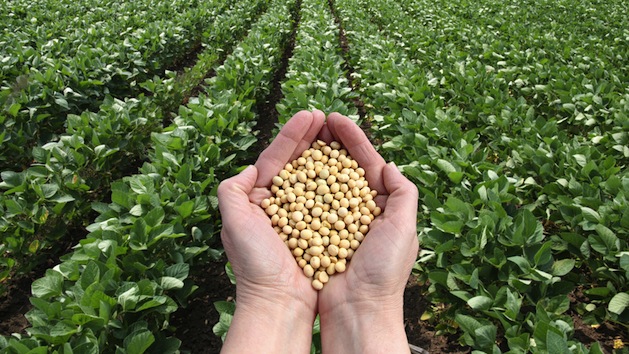
Definition: Non-GMO seeds are those that have not undergone genetic engineering.
Production: They are cultivated using traditional breeding methods, preserving their natural genetic makeup.
Traits: Unlike genetically modified seeds, non-GMO seeds do not possess engineered traits (e.g., pest resistance).
Genetic Diversity: Non-GMO seeds contribute to maintaining diverse plant populations.
Ecosystem Health: By avoiding genetic modification, we promote healthier ecosystems.
Consumer Choice: Non-GMO crops offer peace of mind for those concerned about food safety.
Sustainable Agriculture: Supporting non-GMO seeds aligns with environmentally-friendly practices.
Safety: Research continues to evaluate the safety of non-GMO seeds.
Informed Decisions: Consumers should seek accurate information to make choices aligned with their values.
In a world where food choices matter, non-GMO seeds empower us to cultivate crops naturally and sustainably. 🌱🌿🌾
Exploring the History and Origins of Heirloom Seeds
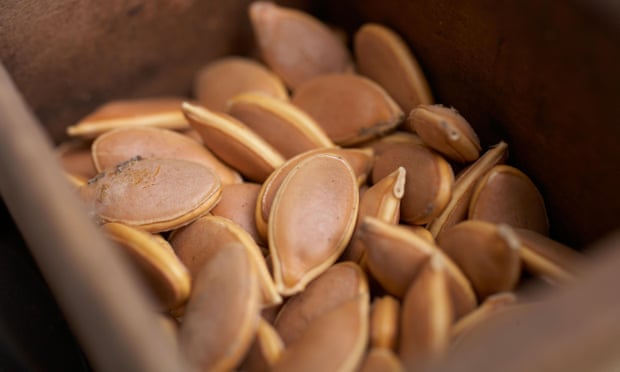
Heirloom seeds hold a rich history that dates back centuries, offering a glimpse into the agricultural practices of our ancestors and the preservation of plant diversity. Here is an overview of the origins and significance of heirloom seeds based on the information gathered from various sources:
Ancient Tradition:
- Neolithic Revolution: Around 12,000 years ago, humans transitioned from hunting and gathering to agriculture, leading to the domestication of plants and animals. This marked the beginning of saving and passing down seeds for generations, creating a tradition that continues to this day.
Cultural Value:
- Family Treasures: Heirloom seeds are often considered family treasures, passed down through generations with sentimental and historical significance. They carry stories of migration, survival, and cultural heritage, such as Old Greek Melons brought by Greek immigrants or Hutterite Soup Bush Beans carried by persecuted Hutterite Christians.
Preservation Efforts:
- Seed Savers Exchange: Organizations like Seed Savers Exchange play a crucial role in preserving heirloom seeds. They collect, document, and share these seeds to prevent their extinction and maintain biodiversity. Seed historians work diligently to trace the lineage and stories behind each seed variety.
Characteristics and Benefits:
- Genetic Diversity: Heirloom seeds come from open-pollinated plants, preserving their genetic composition over generations. This diversity leads to unique crops with varied flavors, nutrient content, disease resistance, and adaptability to local environments.
- Cultural Heritage: Each heirloom seed carries a story that connects growers to their past, whether through family traditions, historical events, or personal memories. These seeds serve as living links to our agricultural history and heritage.
Authenticity and Growing Conditions:
- Certification: Genuine heirloom seeds are certified by specific criteria regarding their origin, history, and characteristics. It is essential to verify the authenticity of heirloom seeds before planting them for a true cultural and historical experience.
- Growing Practices: Providing nutrient-rich soil, proper drainage, adequate spacing, and suitable growing conditions are crucial for nurturing heirloom seeds. These practices ensure optimal growth and bountiful harvests while preserving their unique characteristics.
Heirloom seeds not only offer a diverse array of flavorsome crops but also serve as a bridge between past traditions and present cultivation practices. By understanding their history and significance, growers can appreciate the cultural heritage embedded in each seed they plant.
The Science Behind Organic Farming and Seed Production

The science behind organic farming and seed production is rooted in the principles of sustainability, environmental stewardship, and genetic diversity. Here are key insights into the significance of organic seed production:
Organic seed production not only supports sustainable farming practices but also fosters genetic resilience, environmental conservation, and economic empowerment within the agricultural sector. By embracing organic seeds, farmers contribute to a healthier environment, more resilient food systems, and a sustainable future for agriculture.
The Environmental Impact of Non-GMO Seed Cultivation
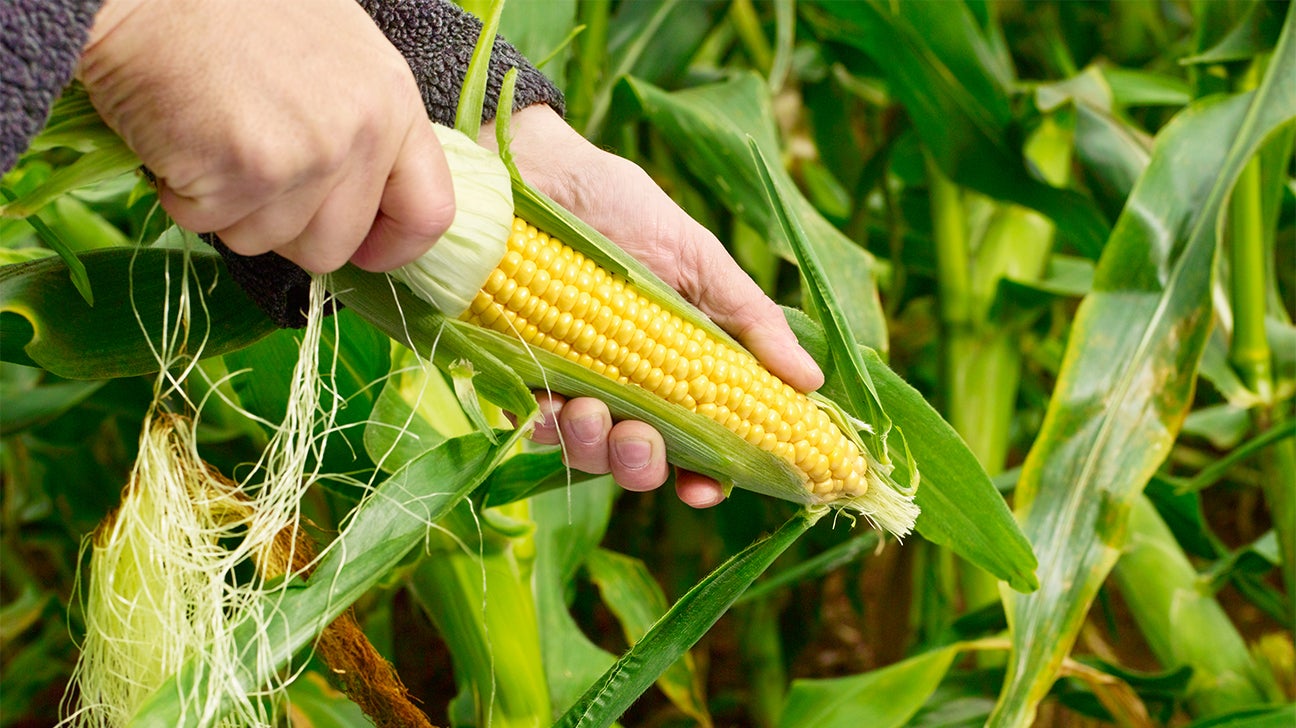
There are several significant environmental impacts associated with non-GMO seed cultivation that must be taken into consideration.
- Synthetic Pesticides and Fertilizers:
- The widespread use of synthetic pesticides and fertilizers can indeed have negative consequences. These chemicals can leach into soil and water, affecting not only the crops but also nearby ecosystems.
- Soil degradation occurs due to the loss of beneficial microorganisms and essential nutrients. It affects soil structure, fertility, and overall health.
- Water pollution arises when runoff carries pesticides and fertilizers into rivers, lakes, and oceans. This harms aquatic life and disrupts ecosystems.
- Wildlife and Ecosystem Risks: Pesticides can harm beneficial insects, birds, and other wildlife. The loss of biodiversity impacts ecosystem stability and resilience.
- Monoculture and Biodiversity:
- Monoculture, where a single crop dominates large areas, is common in conventional agriculture. While it maximizes yield for specific crops, it has drawbacks:
- Reduced Biodiversity: Monocropping limits the variety of plant species. This loss of biodiversity affects pollinators, soil health, and overall ecosystem balance.
- Pest Vulnerability: Monocultures are susceptible to pests and diseases. Without natural predators, pests can thrive.
- Climate Resilience: Diverse ecosystems are more resilient to climate change. Crop rotation and intercropping enhance resilience by reducing vulnerability to extreme weather events.
- Monoculture, where a single crop dominates large areas, is common in conventional agriculture. While it maximizes yield for specific crops, it has drawbacks:
- Sustainable Alternatives:
- Crop Rotation: Alternating crops on the same land helps maintain soil fertility, control pests, and prevent soil depletion.
- Intercropping: Growing different crops together promotes biodiversity, reduces pest pressure, and enhances soil health.
- Agroforestry: Combining trees, crops, and livestock creates diverse ecosystems that benefit both agriculture and the environment.
- Cover Crops: Planting cover crops during fallow periods prevents soil erosion, fixes nitrogen, and improves soil structure.
In summary, transitioning toward sustainable practices—whether with GMO or non-GMO seeds—is crucial for safeguarding our environment, preserving biodiversity, and ensuring food security. 🌱🌎
Choosing the Right Heirloom Seeds for Your Garden: Factors to Consider
When selecting heirloom seeds for your garden, several factors come into play to ensure a successful and rewarding gardening experience.
1. Heirloom Seed Characteristics:
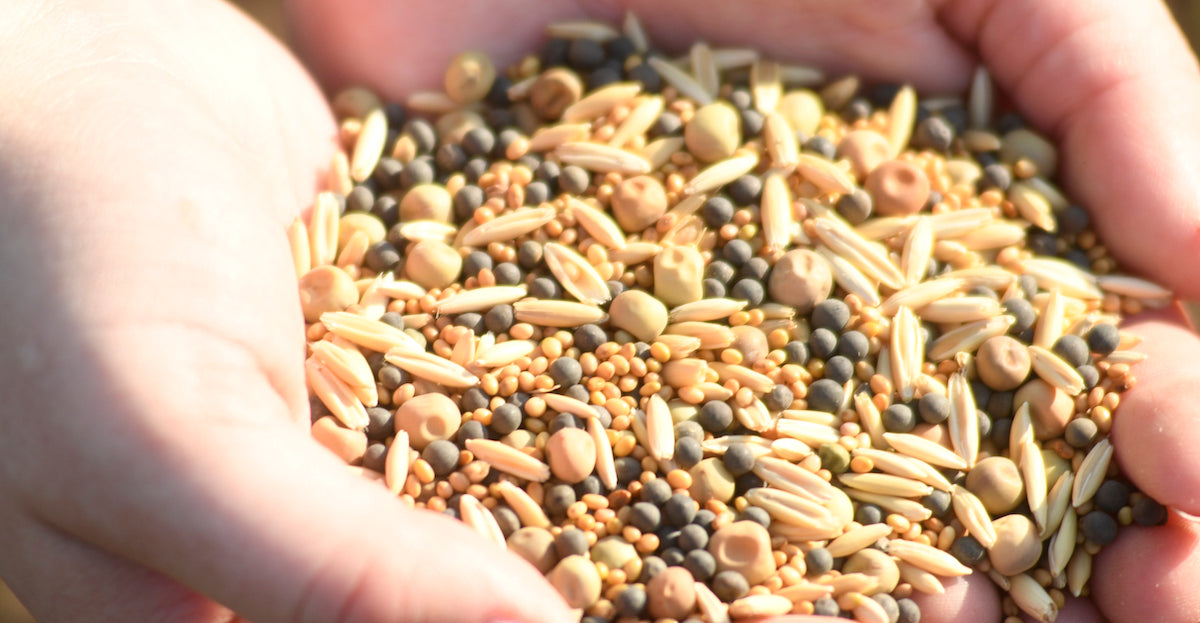
- Open-Pollinated: Heirloom seeds are open-pollinated, meaning they can be saved and replanted season after season while maintaining their unique traits and characteristics. This allows for seed saving and the preservation of genetic diversity.
- True to Type: Heirloom seeds grow true to type, ensuring that the plants produced from saved seeds will closely resemble the parent plant. This consistency is valuable for maintaining specific traits and flavors.
2. Seed Quality and Source:
- Organic and Non-GMO: Opt for heirloom seeds that are organic, non-GMO, and free from chemicals or toxins. Choosing high-quality seeds ensures healthier plants, better flavors, and the ability to save seeds for future seasons.
- Trusted Seed Companies: Select reputable seed companies like Johnny’s Seeds, Baker Creek Heirloom Seeds, Pinetree Garden Seeds, True Leaf Market, or High Mowing Organic Seeds known for their commitment to organic practices and offering a wide variety of heirloom seeds.
3. Plant Selection:
- Variety Suitability: Consider the climate, soil conditions, and available space in your garden when choosing heirloom seed varieties. Select plants that are well-suited to your region to ensure successful growth and abundant harvests.
- Rare and Unique Varieties: Explore heirloom seed catalogs for rare and unique varieties that add diversity to your garden. These varieties often offer distinct flavors, scents, colors, and historical significance.
4. Seed Saving Potential:
- Seed Saving Benefits: Heirloom seeds allow you to save seeds from your plants season after season, promoting self-sufficiency and independence from purchasing new seeds each year. Learning how to save seeds ensures a continuous supply of high-quality seeds.
5. Growing Conditions:
- Soil Quality: Ensure your garden soil is nutrient-rich with proper drainage to support healthy plant growth. Adequate spacing between seedlings promotes air circulation and reduces competition for resources.
- Proper Care: Provide optimal growing conditions such as sunlight exposure, watering schedules, and pest management practices tailored to the specific needs of each heirloom plant variety.
By considering these factors when choosing heirloom seeds for your garden, you can cultivate a diverse array of plants with unique flavors, maintain genetic diversity, support sustainable agriculture practices, and enjoy the rewards of growing your own food season after season.
After using the Open Seed Vault 15,000 Non-GMO Heirloom Vegetable Seeds, I can confidently say that it exceeded my expectations. The variety pack offered an impressive selection of seeds, allowing me to experiment with different plants in my garden. The packaging was sturdy and well-labeled, making it easy to identify each seed type. What impressed me the most was the high germination rate of the seeds.
Within a few days of planting, I observed robust growth in the majority of the seeds I sowed. The included instruction booklet provided valuable tips and information, guiding me through the planting process with ease. Overall, I am highly satisfied with this product and would recommend it to both novice and experienced gardeners alike.
- Non-GMO Heirloom Seeds: The seeds are non-GMO, meaning they have not been genetically modified, and they are heirloom varieties, which often have better flavor and adaptability to local conditions.
- Large Variety: The pack contains a wide variety of vegetable seeds, including beans, pumpkin, lettuce, tomatoes, sunflower, radish, spinach, carrots, cucumbers, watermelon, squash, peppers, and eggplants, providing options for different tastes and growing conditions.
- High Yield Potential: With up to 15,000 fruits and vegetables harvestable from 3,000 seeds per variety seed pack, the pack offers the potential for a plentiful harvest, which is beneficial for both personal consumption and potential surplus for sharing or trading.
- Survivalist and Emergency Preparedness: These seeds are marketed as essential for emergency situations such as natural disasters or acts of God. They can be crucial for survivalists, preppers, and those creating emergency supplies or bug out bags.
- Step-by-Step Instructions: The pack includes step-by-step instructions and a seed-saving guide for growing and seed saving. This can be helpful for beginners or those looking for guidance on how to maximize their yield and save seeds for future planting.
- High Germination Rates: The seeds are stored in air-tight, moisture-proof resealable bags, ensuring high germination rates and 99% purity. This increases the likelihood of successful growth and a bountiful food supply.
- Limited Quantity: Some users have reported receiving fewer seeds than expected for certain varieties. For example, one user mentioned receiving only 8-10 bean seeds along with other packs. This may lead to disappointment for those expecting larger quantities of certain seeds.
- Price: While the price of the pack may initially seem reasonable considering the variety and quantity of seeds included, some users may find it expensive compared to other options, especially if they only require a few specific types of seeds.
- Packaging Size: A few users have mentioned that the packaging size was smaller than anticipated. While this may not be a significant issue, it could affect perceptions of value for some customers.
- Seed Storage Duration: Concerns have been raised about the shelf life of the seeds and how long they will remain viable in their individual packages. Proper storage conditions are crucial for preserving seed viability, but it’s unclear how long the seeds will remain viable beyond the initial purchase.
- Quantity Variability: There have been reports of variability in the number of seeds received for different varieties, with some users receiving more seeds than others. This lack of consistency in quantity may lead to dissatisfaction among customers expecting equal amounts of each seed variety.
Tips for Starting and Maintaining an Organic Seed Bank
Starting an organic seed bank can be a rewarding venture for those passionate about preserving biodiversity and promoting sustainable agriculture. Here are some tips to help you get started and maintain a successful organic seed bank.
1. Choose the right location: Select a site for your seed bank that is free from contamination and provides the optimal conditions for seed storage. It should be cool, dry, and well-ventilated to prevent mold and fungus growth.
2. Source high-quality organic seeds: Acquiring organic seeds from reputable suppliers, farmers, or fellow gardeners is crucial. Ensure that the seeds are certified organic and come from plants that were grown without synthetic fertilizers, pesticides, or genetic modification. This will ensure the integrity of your seed bank and the organic principles it upholds.
3. Practice proper seed storage techniques: To maintain the viability of your organic seeds for the long term, it is essential to store them correctly. Keep the seeds in airtight containers, preferably glass jars, and store them in a cool, dark place, such as a refrigerator or a dedicated seed bank freezer. Remember to label each container with the seed variety, date of collection, and any other relevant information.
4. Regularly test seed germination rates: Conducting germination tests on stored seeds is vital to ensure viability. This involves planting a sample of seeds in a controlled environment and observing how many successfully sprout. If germination rates are consistently low, it may be necessary to replenish your seed stock with fresh organic seeds.
5. Share and exchange seeds: Collaboration is key in maintaining a diverse seed bank. Participate in seed swaps, seed libraries, or online forums to exchange seeds with other enthusiasts. By sharing your organic seeds and receiving new varieties in return, you contribute to the overall diversity and resilience of the organic seed movement.
By following these tips, you can create and maintain an organic seed bank that supports sustainable agriculture, conserves genetic diversity, and contributes to the worldwide seed-saving movement.
I highly recommend these two contanier for the storage of seeds. They are airtight and proctect seeds from moisture. I have also been using them for storing my seeds.
✅ Versatile Use: These jars are multipurpose and can be used for storing a variety of items including food, flour, pasta, coffee, candy, dog treats, and snacks, making them suitable for use in the kitchen, pantry, or even office spaces.
✅ Durable Construction: Made of high-quality glass, these jars are sturdy and durable, providing long-lasting storage solutions. Glass is also non-reactive, ensuring that the taste and quality of stored food items remain intact.
✅ Easy to Clean: The jars are easy to clean, either by hand washing or through dishwasher compatibility, making maintenance hassle-free and convenient for everyday use.
✅ Attractive Design: With a stylish design, these glass jars can be displayed on countertops or shelves, adding a decorative touch to any kitchen or pantry while also providing practical storage solutions.
✅ Customer Satisfaction Guarantee: The product comes with a satisfaction guarantee, offering a full refund if customers are not satisfied with their purchase, demonstrating the manufacturer’s confidence in the quality of their product.
❌ Potential Fragility: Glass containers, while durable, can be prone to breakage if mishandled, posing a risk of injury and requiring careful handling and storage.
❌ Not Stackable: Due to their round shape, these jars may not stack efficiently, potentially taking up more space in cabinets or on shelves compared to stackable storage options.
❌ Limited Color/Style Options: While the product may offer functionality, some users may prefer a wider range of color or style options to better match their kitchen decor or personal preferences.
✅ Tall Design: The taller and larger design of these jars makes them perfect for storing spaghetti and other long items without the need to break them, maintaining their integrity and freshness.
✅ Square Shape: The square body of the jars allows for easier organization and placement on shelves, maximizing storage space and making them visually appealing when lined up next to each other.
✅ Airtight Seal: Equipped with airtight lids, these jars effectively seal in freshness and prevent moisture from entering, keeping contents dry and preserving their flavor and quality for longer periods.
✅ Versatile Use: These jars are suitable for storing a wide range of dry goods, including pasta, cereal, flour, coffee, snacks, candies, nuts, beans, grains, and more, offering versatility in kitchen storage solutions.
✅ Easy to Clean: With a smooth glass surface, these jars are easy to clean and maintain, ensuring hassle-free upkeep even with regular use.
❌ Price: While the price per jar may seem reasonable, purchasing multiple sets can become costly, especially for those on a tight budget or looking for more affordable storage options.
❌ Fragility: Being made of glass, these jars are prone to breakage if mishandled or dropped, posing a risk of accidents and potentially leading to the loss of stored items.
❌ Space Requirements: The tall design of these jars may not fit well in all kitchen cabinets or shelves, requiring ample vertical space for storage, which could be a limitation for those with limited kitchen storage space.
❌ Labeling: While the set includes eight stickers for labeling, some users may prefer more labeling options or a more permanent labeling solution for better organization and identification of stored items.
❌ Not Microwave Safe: These glass jars may not be suitable for microwave use, limiting their versatility for reheating or cooking purposes compared to microwave-safe containers.
How to Identify and Avoid Genetically Modified Seeds
To identify and avoid genetically modified (GM) seeds, consider the following tips:
Labeling and Certification:
- Look for products labeled “100% Organic” as U.S. law prohibits genetically engineered food in products with this label. For processed foods labeled simply “organic,” they can contain up to 30% GM ingredients. The “Non-GMO Project Verified” label on packaging indicates that GMO contamination has been avoided throughout the production process.
Understanding PLU Codes:
- Check the PLU code on produce labels or stickers. A 4-digit number indicates conventional farming, a 5-digit number starting with a 9 signifies organic produce, and a 5-digit number starting with an 8 indicates genetically modified produce. However, note that PLU labeling is optional, so not all GM produce can be identified this way.
Commonly Modified Foods:
- Be aware of common GM foods like soybeans, corn, canola oil, dairy products from cows treated with GM growth hormones, sugar beets, and products containing aspartame. Opt for organic or non-GMO-labeled alternatives to avoid genetically modified ingredients.
Avoiding Specific Ingredients:
- When purchasing products containing corn or soy, ensure they are labeled as “100% organic” to avoid GM varieties. Look for alternative ingredients like evaporated cane sugar instead of beet sugar to steer clear of GM sources.
Seeking Non-GMO Certifications:
- Choose products with the “Non-GMO Project Verified” logo to ensure they have undergone testing to confirm their non-GMO status. This certification provides assurance that the product is free from genetically modified organisms.
By being mindful of labeling, PLU codes, common GM foods, specific ingredients, and seeking non-GMO certifications like the “Non-GMO Project Verified” label, consumers can make informed choices to identify and avoid genetically modified seeds and products while supporting non-GMO alternatives in their diet and lifestyle.
The Role of Heirloom Seeds in Preserving Cultural Heritage and Traditional Agriculture
Heirloom seeds are like time-traveling storytellers, whispering tales of the past and carrying the essence of generations. Let’s explore their significance:
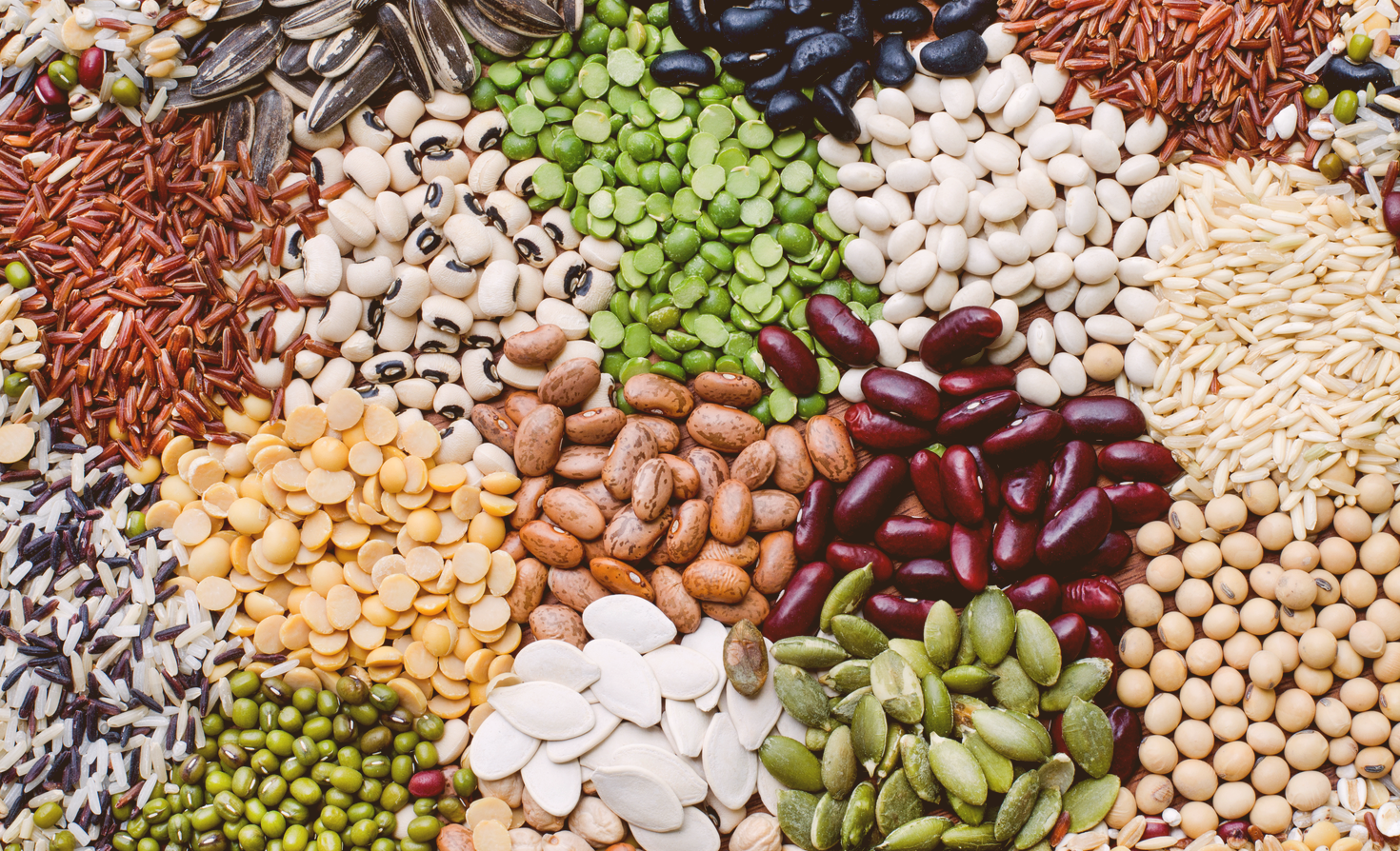
- Cultural Heritage:
- Passed Down: Heirloom seeds are the living legacies of our ancestors. They’ve journeyed through time, from ancient gardens to our plots.
- Community Bonds: These seeds connect us to our roots, traditions, and the wisdom of those who tended them.
- Preserving Unique Varieties:
- Vanishing Gems: Heirlooms preserve rare and local varieties that commercial agriculture often overlooks.
- Biodiversity Guardians: By growing heirlooms, we protect plant diversity and prevent genetic erosion.
- Flavors, Textures, and Colors:
- Taste the Rainbow: Heirloom fruits and veggies burst with distinctive flavors—from sweet to tangy, earthy to floral.
- Texture Play: Crisp, juicy, or velvety—each bite tells a story.
- Vibrant Palette: Heirlooms flaunt hues beyond the standard supermarket fare—purple tomatoes, rainbow chard, golden beets.
- Genetic Treasure Chest:
- Resilience Heroes: Their diverse genetics make our food system robust. Climate change? Pests? Heirlooms say, “We got this!”
- Seed Saving: Heirlooms allow us to save seeds, perpetuating their magic for future harvests.
So, as you plant those heirloom seeds, remember: You’re not just growing veggies; you’re cultivating history, flavor, and resilience. 🌱🌿
Organic Seed Certification: What It Means and How It Works
Organic seed certification is a crucial aspect of organic agriculture, ensuring that seeds meet specific standards for organic production. Here is an overview of what organic seed certification entails and how it works:
To be sold as organic, seeds must adhere to all requirements for organic food production. This includes growing crops on land free from prohibited substances, being managed according to an organic system plan, and being certified by an accredited certifying agent.
Organic producers are mandated to use organically grown seeds and planting stock unless the variety or its equivalent is not commercially available from an organic source. This requirement aims to promote the use of organic seeds in organic farming practices.
Most seed treatments involving synthetic fungicides and insecticides are prohibited for organic seeds. However, natural and allowed synthetic substances like biological treatments, clays, and botanicals can be applied to organic seeds.
While the availability of organic seeds is increasing, it can still be challenging to find specific varieties. Organic producers are required to use organic seed when commercially available, although there is no comprehensive list of all commercially available seed. Producers are encouraged to search for multiple sources of organic seed.
The certification process involves third-party verification of production practices for agricultural products marketed as “certified organic.” It includes adherence to standards for growing, storage, processing, packaging, and shipping that prohibit synthetic chemical inputs, genetically modified seeds, and require detailed record-keeping and periodic on-site inspections.
Organic certification assures quality, prevents fraud, promotes commerce in the organic sector, and provides consumers with confidence in the products they purchase. It helps regulate the sale of organic products and ensures transparency in production methods.
Organic seed certification plays a vital role in maintaining the integrity of organic agriculture by setting standards for seed production that align with organic principles. By following these guidelines and obtaining certification from accredited agencies, producers contribute to sustainable agriculture practices and provide consumers with trusted organic products.
The Economic Benefits of Growing Heirloom, Organic, and Non-GMO Seeds
Growing heirloom, organic, and non-GMO seeds offer significant economic benefits for growers. These seeds are in high demand, commanding premium prices in the market due to their perceived higher quality, leading to better profits and potentially more stable income. Additionally, focusing on these unique seed varieties can contribute to niche markets, allowing growers to target specific consumer preferences and establish a loyal customer base.

Here are the economic benefits of growing heirloom, organic, and non-GMO seeds:
Market Premium:
Moreover, the demand for these seeds can create new business prospects like seed saving and exchange initiatives, allowing growers to diversify their income streams and thrive in a competitive agricultural market. By choosing heirloom, organic, and non-GMO seeds, growers can not only benefit economically but also contribute to sustainable agriculture practices and the preservation of plant diversity.
The Challenges and Solutions of Seed Saving for Heirloom Varieties
- Physical Separation:
- Objective: Prevent cross-pollination between different varieties.
- Methods:
- Spacing: Plant different heirloom varieties far apart to minimize the chances of their pollen mixing.
- Barriers: Use tall crops, fences, or other physical barriers to create separation zones.
- Benefits: Effective and straightforward approach.
- Timed Planting and Flowering:
- Objective: Avoid overlapping flowering periods.
- Strategy:
- Planting Schedule: Time the planting of different varieties so that their flowering periods do not coincide.
- Flowering Windows: Ensure there’s a gap between when each variety blooms.
- Advantages: Reduces the risk of accidental cross-pollination.
- Hand-Pollination Techniques:
- Objective: Control pollination to maintain genetic purity.
- Process:
- Manual Transfer: Transfer pollen from the male part (stamen) of one plant to the female part (pistil) of another.
- Isolation: Isolate specific plants during flowering to prevent unwanted cross-pollination.
- Precision: Requires attention to detail but ensures accurate pollination.
Remember, these practices not only preserve heirloom traits but also contribute to the diversity and resilience of our food system. Happy gardening! 🌱🌼🍅
Common Myths and Misconceptions About Organic and Non-GMO Seeds
Organic and non-GMO seeds have become increasingly popular in recent years due to the growing desire for healthier and more sustainable food options. However, along with their rise in popularity, there are also several myths and misconceptions surrounding these types of seeds. One common myth is that organic seeds are more expensive than conventional ones.
While it is true that organic seeds may initially have a higher price tag, it is important to consider the long-term benefits. By using organic seeds, gardeners can avoid the use of synthetic pesticides and fertilizers, resulting in healthier plants and ultimately, reduced costs for pest control.
Another misconception often heard is that non-GMO seeds are less productive or have lower yields compared to genetically modified varieties. This assumption is simply not true. Non-GMO seeds have been bred through traditional methods, without genetic modification, and they can offer just as high yields and productivity as their genetically modified counterparts.
The misconception may stem from the fact that many genetically modified seeds are designed to be resistant to specific pests or herbicides, which can increase their productivity in certain conditions. However, with proper management practices and selection of suitable non-GMO varieties, gardeners can achieve comparable yields while maintaining the integrity of natural seed genetics.
Exploring the Nutritional Benefits of Heirloom and Organic Produce
Heirloom and organic produce indeed offer a wealth of nutritional benefits, and their cultivation methods play a significant role in their nutrient content. Let’s delve into the fascinating world of heirloom and organic produce:

- Heirloom vs. Hybrid Produce:
- Heirloom produce refers to varieties that have been passed down through generations, maintaining their original genetic makeup. These plants are open-pollinated, allowing their seeds to be saved and replanted each year.
- Hybrid produce, on the other hand, results from crossbreeding different varieties to create new ones. While hybrids may offer advantages like disease resistance, they often sacrifice taste and nutrition for commercial purposes.
- Nutritional Edge of Heirlooms:
- Taste and Nutrition: Heirloom veggies tend to win the taste and nutrition contest. Their rich flavors are a testament to their higher nutrient density. For example, heirloom tomatoes are juicier and tangier compared to bland hybrid counterparts.
- Industrial Farming Impact: Commercial growers prioritize hybrid strains due to higher yields and easier shipping. Unfortunately, this pursuit often compromises taste and nutrition.
- Refractometer Test: Using a refractometer, we can measure nutrient density. Heirloom veggies consistently score higher in this test.
- Supporting Local Farmers: Choosing heirloom varieties supports local farmers who grow open-pollinated produce. These seeds can be saved from year to year, reducing unnecessary expenses.
- Remember: Organic produce at stores is predominantly hybrid. Seek out local farmers growing heirloom varieties in nutrient-rich soil for superior taste and nutrition.
- Heritage Foods and Nutrient Density:
- While research is limited, some experts believe that heritage foods (including heirlooms) have greater nutrient densities due to their purity. Mass production and chemical use have led to declining nutritional values in many crops.
- The effects of toxic chemicals and large-scale farming impact the nutrient content of both conventional and organic produce.
- Organic vs. Conventional:
- Based on antioxidant phytonutrient levels, organic produce may be 20% to 40% healthier than conventional produce. However, it can be more expensive.
- Consider the trade-off: spending the same amount on conventional produce but consuming extra servings to match the health benefits of organic choices.
In summary, opting for heirloom and organic produce allows us to savor exceptional flavors while nourishing our bodies with essential nutrients. Let’s celebrate the diversity and goodness of these time-honored varieties! 🌱🍅🥦
Supporting Seed Diversity: How Gardeners Can Contribute to the Seed Saving Movement
- Role of Gardeners in Seed Diversity:
- Preserving Genetic Diversity: Gardeners contribute to sustainable agriculture by saving seeds from open-pollinated plants.
- Unique Traits: By saving seeds from their own plants, gardeners ensure the continuity of heirloom and open-pollinated varieties.
- Determining Seed Viability:
- Factors Affecting Viability: Seed viability varies based on plant type and storage conditions.
- Germination Test: Conduct a simple test:
- Place a few seeds on a damp paper towel or in moist soil.
- Observe if they sprout within a reasonable time.
- High germination rate indicates good seed viability.
- Labeling and Dating:
- Properly label and date saved seeds for accurate reference.
- Organized labeling ensures you know what you’re planting next season.
Happy seed saving! 🌱🌿
Watch video for more information:
FAQ
What are heirloom seeds?
Heirloom seeds are traditional varieties of plants that have been passed down through generations. They are open-pollinated and have a long history of cultivation.
Why is maintaining genetic diversity important?
Genetic diversity is crucial for the resilience and adaptability of plant species. It helps plants withstand diseases, pests, and environmental changes.
What are organic seeds?
Organic seeds are produced without the use of synthetic fertilizers, pesticides, or genetically modified organisms. They are grown using natural and sustainable farming practices.
How do organic seeds benefit our health and the environment?
Organic seeds reduce our exposure to harmful chemicals and promote healthier soil, water, and ecosystems. They also support biodiversity and sustainable agriculture.
What are non-GMO seeds?
Non-GMO seeds are not genetically modified through biotechnology. They are free from genetic alterations and are grown using traditional breeding methods.
Why do non-GMO seeds matter in today’s agriculture?
Non-GMO seeds help protect biodiversity and preserve natural genetic traits. They also ensure consumer choice and contribute to sustainable farming practices.
What is the difference between heirloom and hybrid seeds?
Heirloom seeds are open-pollinated and preserve specific genetic traits, while hybrid seeds are the result of crossbreeding different varieties to create specific traits.
How can gardeners contribute to the seed saving movement?
Gardeners can contribute to the seed saving movement by saving and sharing heirloom, organic, and non-GMO seeds. They can also support local seed banks and participate in seed swaps.
How can I identify genetically modified seeds?
Genetically modified seeds may have specific traits, such as resistance to pests or herbicides. Look for labels or certifications that indicate if seeds are non-GMO.
What is the significance of heirloom seeds in preserving cultural heritage?
Heirloom seeds carry the history and traditions of different communities and cultures. They help preserve traditional agricultural practices and cultural identity.
What is organic seed certification?
Organic seed certification ensures that seeds are produced in accordance with organic farming standards. It involves rigorous testing and documentation to maintain their organic integrity.
Can growing heirloom, organic, and non-GMO seeds be economically beneficial?
Yes, growing these seeds can be economically beneficial as they often command higher prices in the market. They also reduce input costs by promoting natural pest and disease resistance.
What are the challenges of seed saving for heirloom varieties?
Challenges of seed saving for heirloom varieties include cross-pollination with other varieties, maintaining purity, and preserving seed viability over time.
Are there any myths or misconceptions about organic and non-GMO seeds?
Yes, some common myths include the belief that organic or non-GMO seeds are less productive or that they cannot be genetically modified. These misconceptions are not supported by scientific evidence.
What are the nutritional benefits of heirloom and organic produce?
Heirloom and organic produce often have higher nutritional content compared to conventionally grown varieties. They are rich in vitamins, minerals, and antioxidants.
How can I start and maintain an organic seed bank?
To start an organic seed bank, you can collect and save seeds from organic plants, properly store them, and establish a system to organize and share seeds with others interested in organic gardening.

Studied Agricultural Engineering-Plant Protection at University of California, Davis.
Head of Content writing team at Southelmontehydroponics.com

